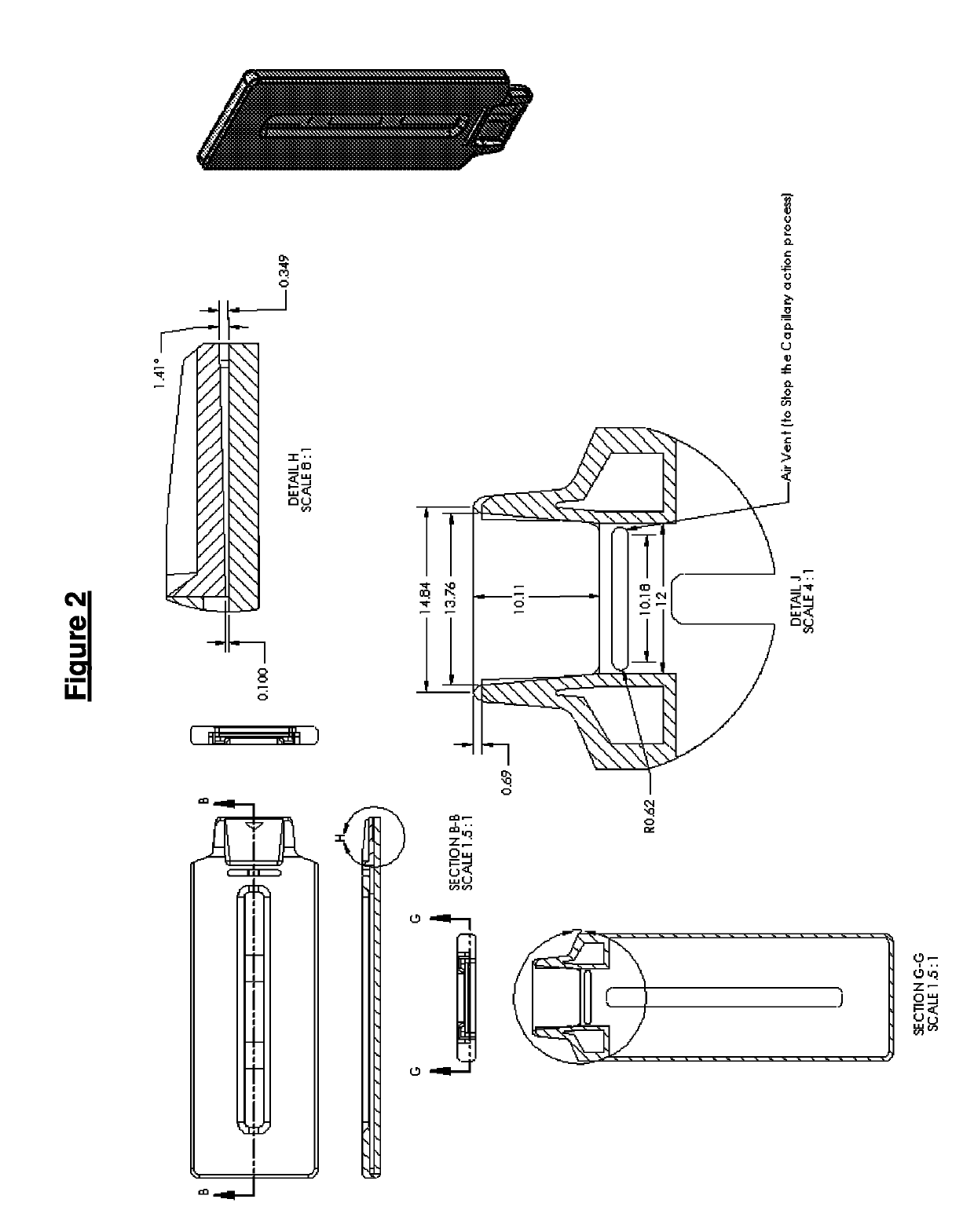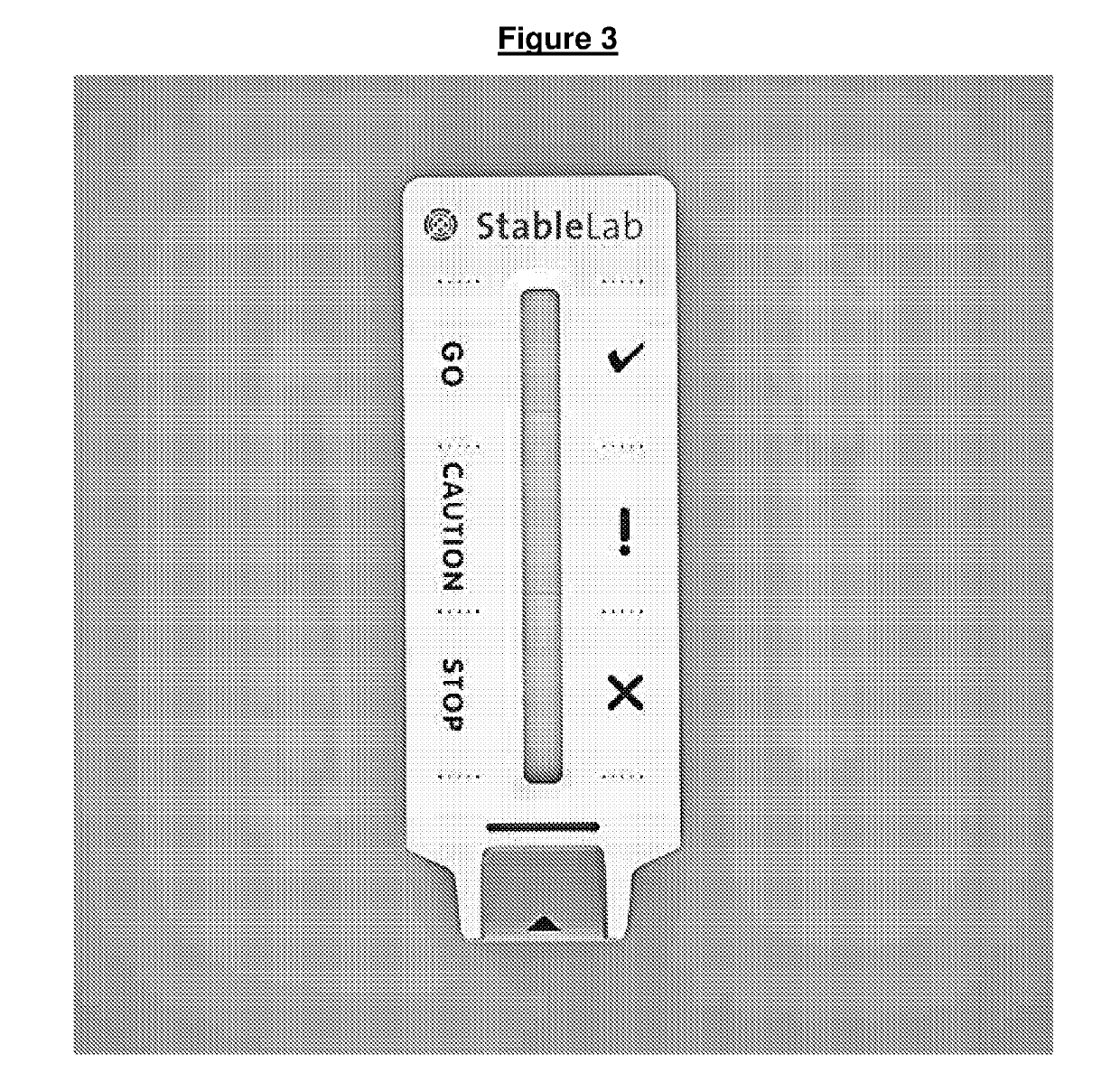Test fluid collection system
a fluid collection and fluid technology, applied in the field of assay methods and materials, can solve the problems of requiring utilization, requiring the use, and negate months of a costly training program, and achieve the effects of enhancing capillary force, rapid collection, and reducing labor intensity
- Summary
- Abstract
- Description
- Claims
- Application Information
AI Technical Summary
Benefits of technology
Problems solved by technology
Method used
Image
Examples
example 1
REFERENCES FOR EXAMPLE 1
[0282][1] Parry-Billings M, Budget R, Koutedakis Y, Blomstrand E, Brooks S, Williams C, et al. Plasma amino acid concentrations in the overtraining syndrome: possible effects on the immune system. Med Sci Sports Excer 1992; 24:1353-1358.[0283][2] Rickets S W. Hematologic and Biochemical abnormalities in athletic horses. In: Hinchcliff K W, Keneps A J, Geor R J, editors. Equine Sports Medicine and Surgery, Philadelphia: W. B Saunders; 2004, p. 952.[0284][3] Welles E G. Interpretation of Equine Leukocyte Responses. In: Weiss D J, Wardrop K J. Schalm's Veterinary Hematology, 6.ed, Iowa: Wiley-Blackwell; 2010, p. 317[0285][4] Couetil L L, Hoffman A M, Hodgson J, Buechner-Maxwell V, Viel L, Wood J L N, et al. Inflammatory Airway Disease of Horses. J Vet Intern 2007; 21:356-361.[0286][5] Grondin T M, Dewitt S F, Normal hematology of the horse and donkey. In: Weiss D K, Wardrop K J. Schalm's veterinary hematology, 6.ed, Iowa: Wiley-Blackwell, 2010; p. 821-828.[0287]...
example 2
Introduction and Methods
[0303]Clinical symptoms in horses may only appear when over-stressing has already occurred, and there is an unmet need to provide methods to determine imminent problems at sub-clinical stages.
[0304]The SAA levels of a group of thoroughbred horses bred for flat racing were recorded over a three month period (April to June and n=61) as part of a routine biochemical panel for pre-performance testing. Of the 61 horses tested 25 ran during the testing period. The horses were managed in the same way under the same training schedule. SAA levels were determined using a two-step lateral flow immunoassay and a lateral flow reader (LFR101) by the suitably qualified in-house laboratory technician. The names of the horses and the events in which they participated were recorded but not reported. The data was observed and three relevant ranges for horses in training became apparent. Horses with a SAA concentration below 7.5 ug / ml are clinically well, free from subclinical i...
example 3
[0323]A case study was conducted to assess the efficacy of SAA as a tool to monitor and manage the recovery of horses. A previous study had indicated that SAA concentrations above 200 ug / ml are accompanied by clinical symptoms and therefore SAA may be used monitor recovery and response to treatment; however the range above 200 μg / ml was not fully investigated due to the limitation of elevated samples.
[0324]For this reason an additional case study was performed to specifically evaluate SAA as a tool for monitoring recovery. Clinical comments were provided by a veterinarian at the time of testing. The name of the horse was recorded but is not reported.
[0325]The SAA levels of a horse that presented with travel sickness (pleuropneumonia) were measured daily for 13 days following a 6689 kilometer transportation (Table 1, FIG. 11). Clinical examination, SAA testing and scanning were carried out by an ambulatory veterinarian. The horse was treated with Ceftiofur (antibiotic), Marbofloxacin...
PUM
| Property | Measurement | Unit |
|---|---|---|
| circumference | aaaaa | aaaaa |
| circumference | aaaaa | aaaaa |
| length | aaaaa | aaaaa |
Abstract
Description
Claims
Application Information
 Login to View More
Login to View More - R&D
- Intellectual Property
- Life Sciences
- Materials
- Tech Scout
- Unparalleled Data Quality
- Higher Quality Content
- 60% Fewer Hallucinations
Browse by: Latest US Patents, China's latest patents, Technical Efficacy Thesaurus, Application Domain, Technology Topic, Popular Technical Reports.
© 2025 PatSnap. All rights reserved.Legal|Privacy policy|Modern Slavery Act Transparency Statement|Sitemap|About US| Contact US: help@patsnap.com



